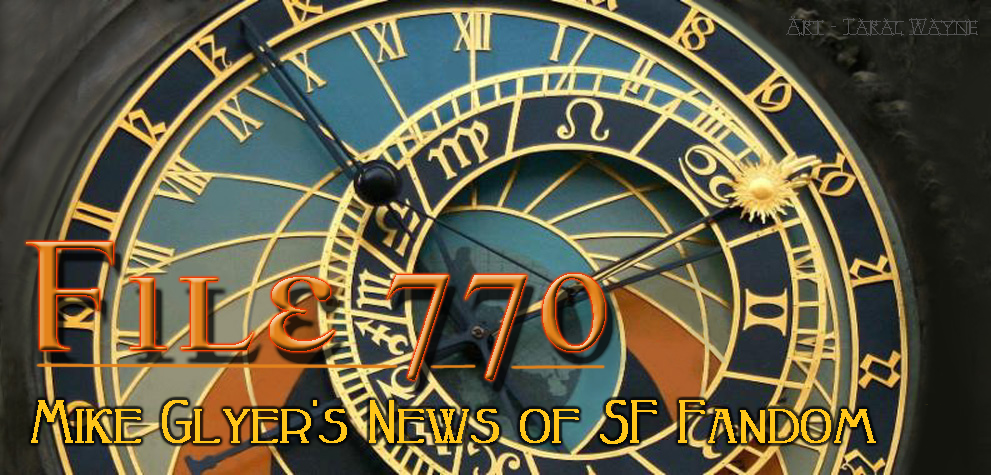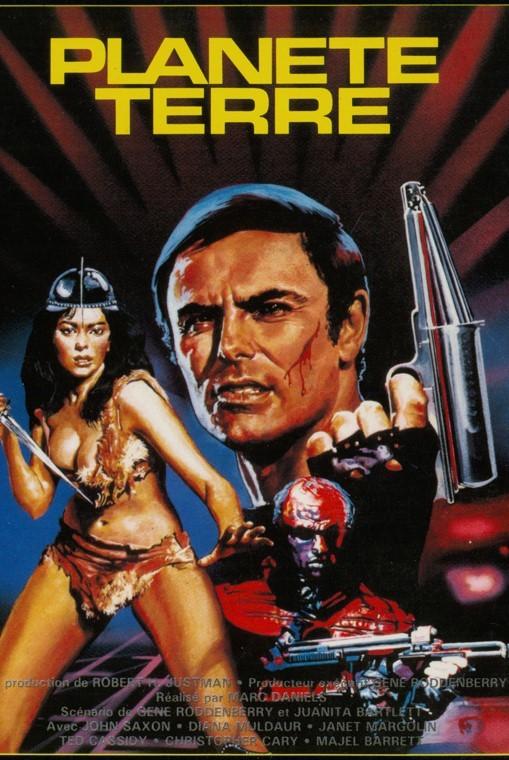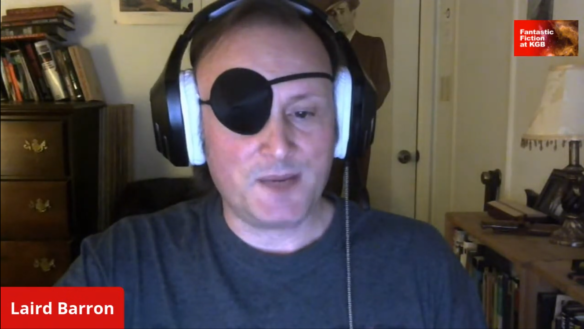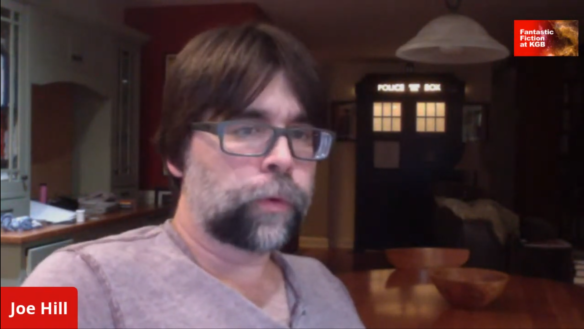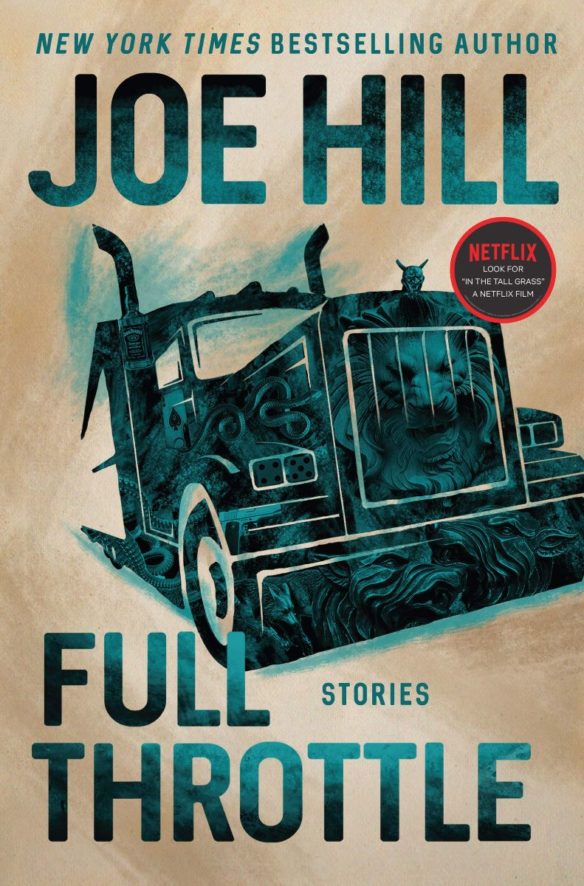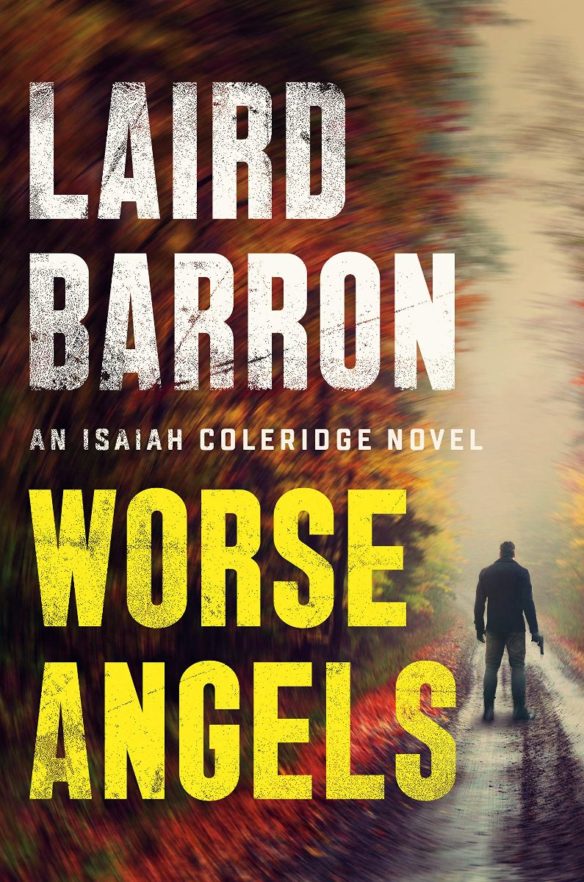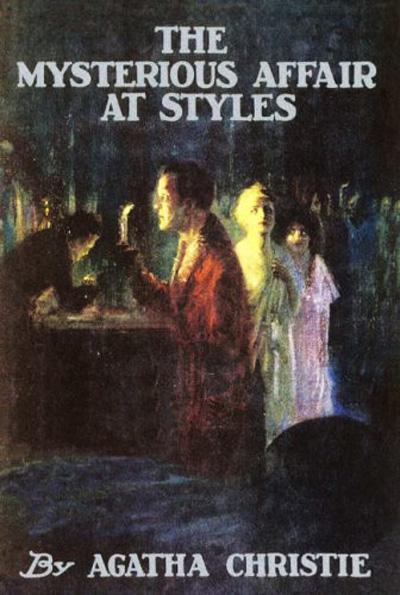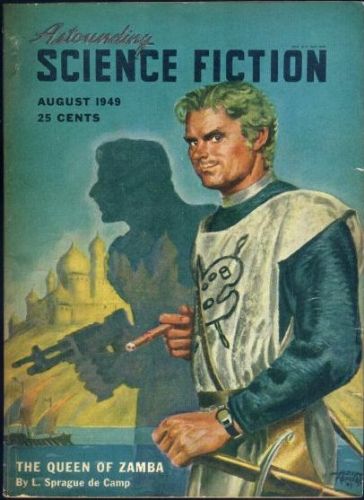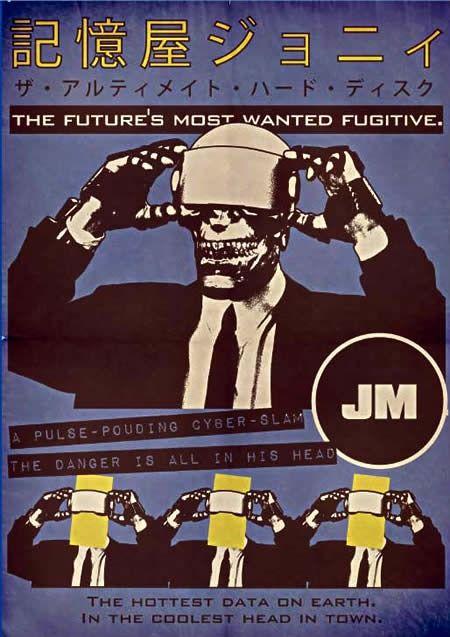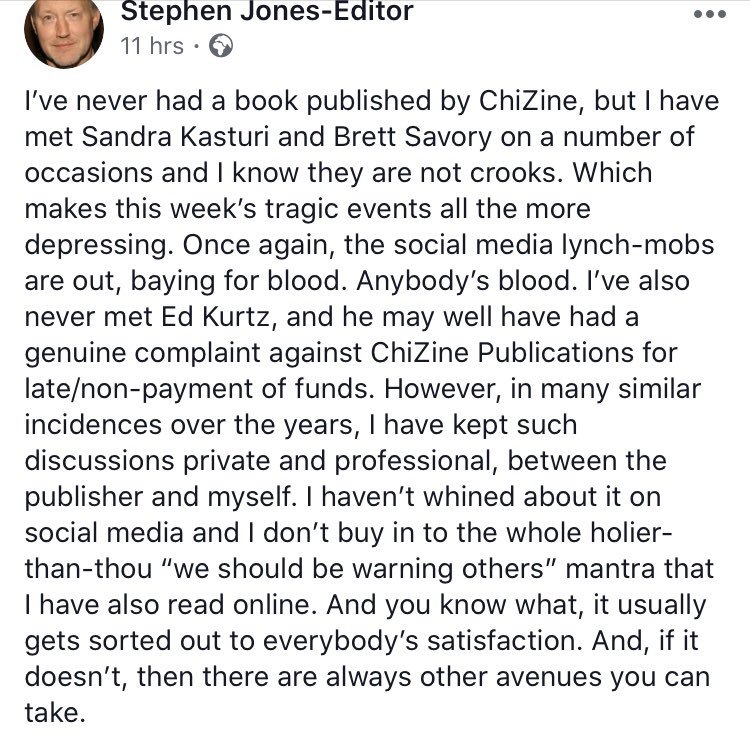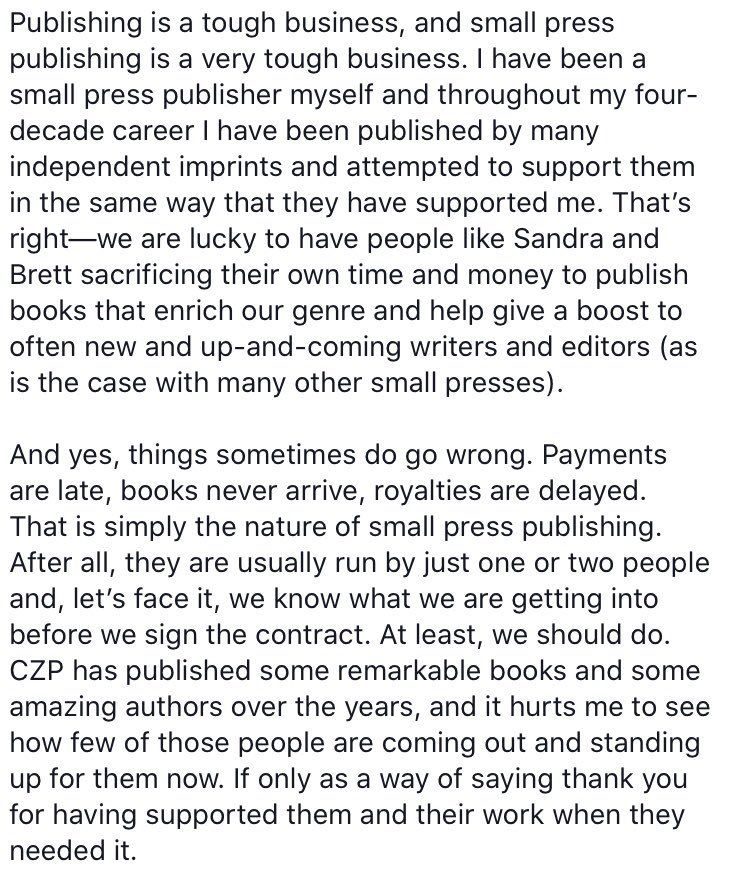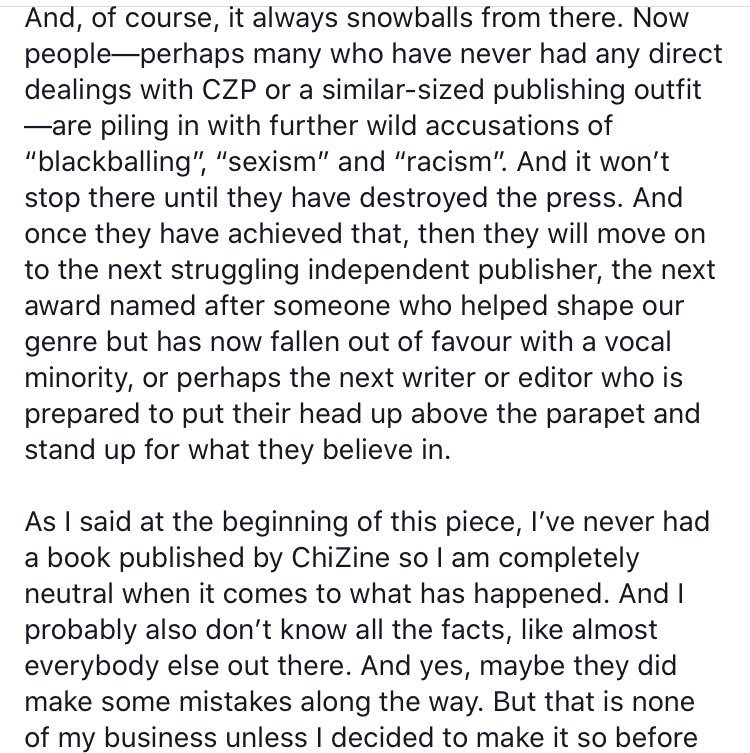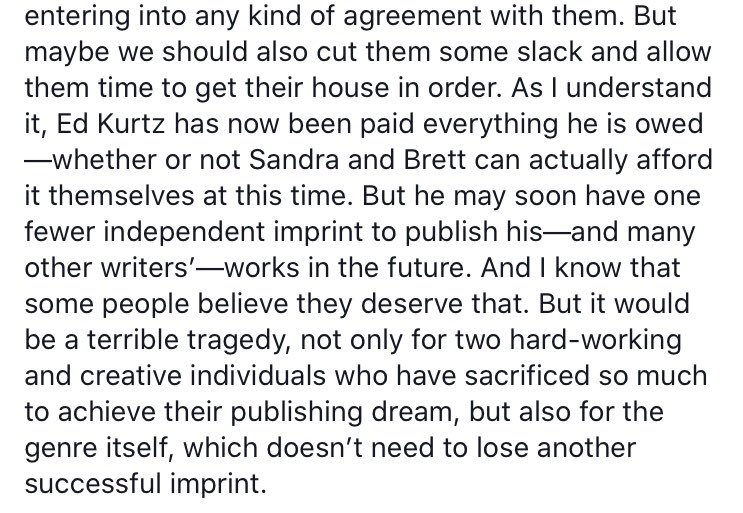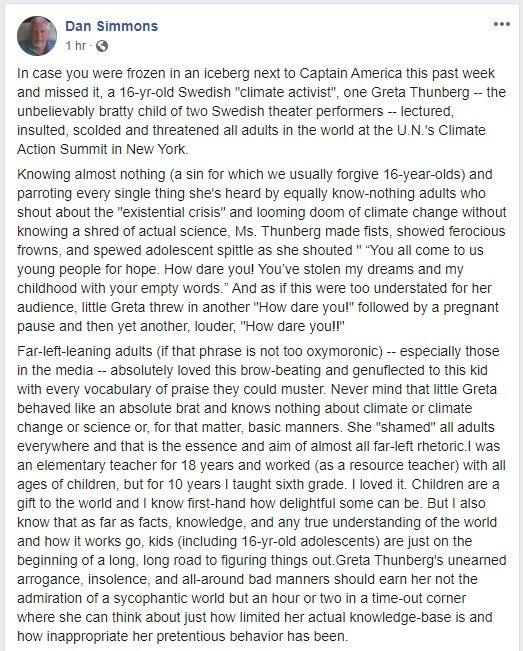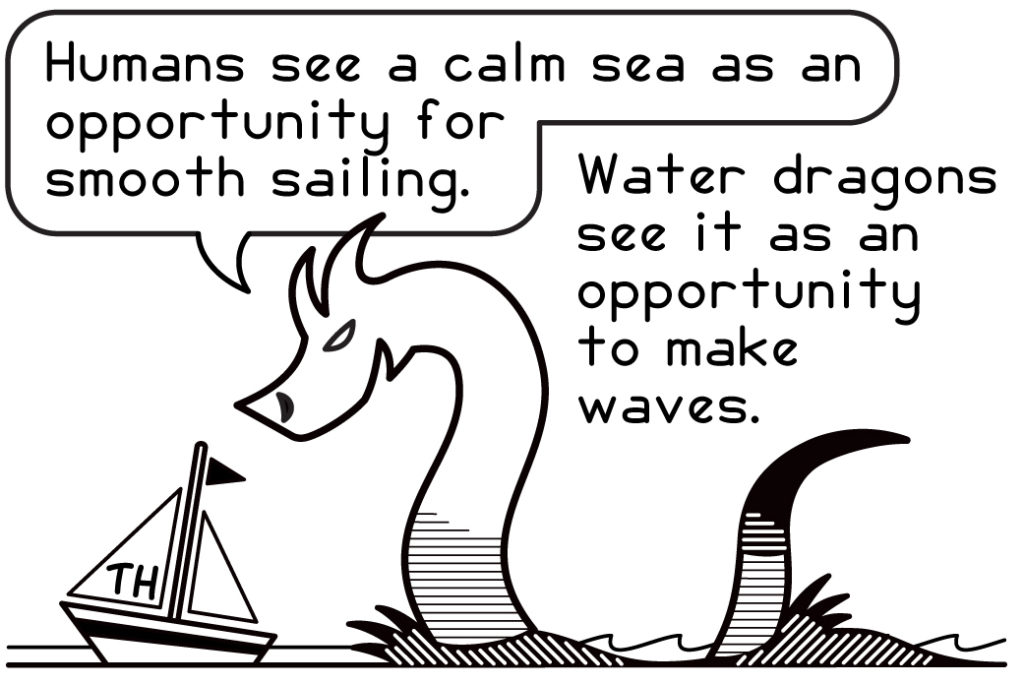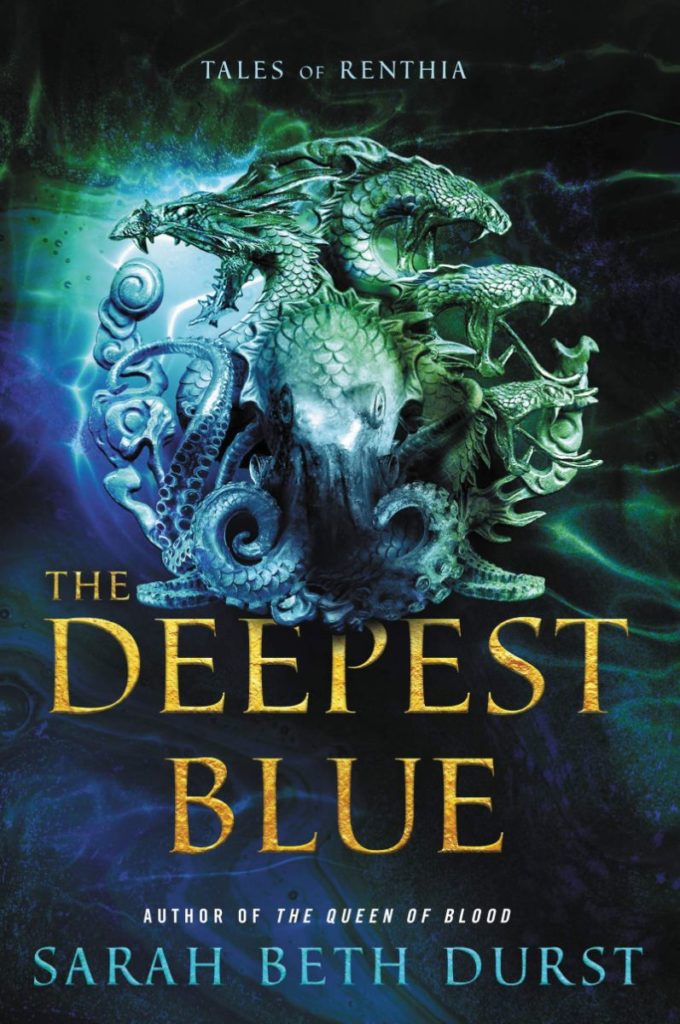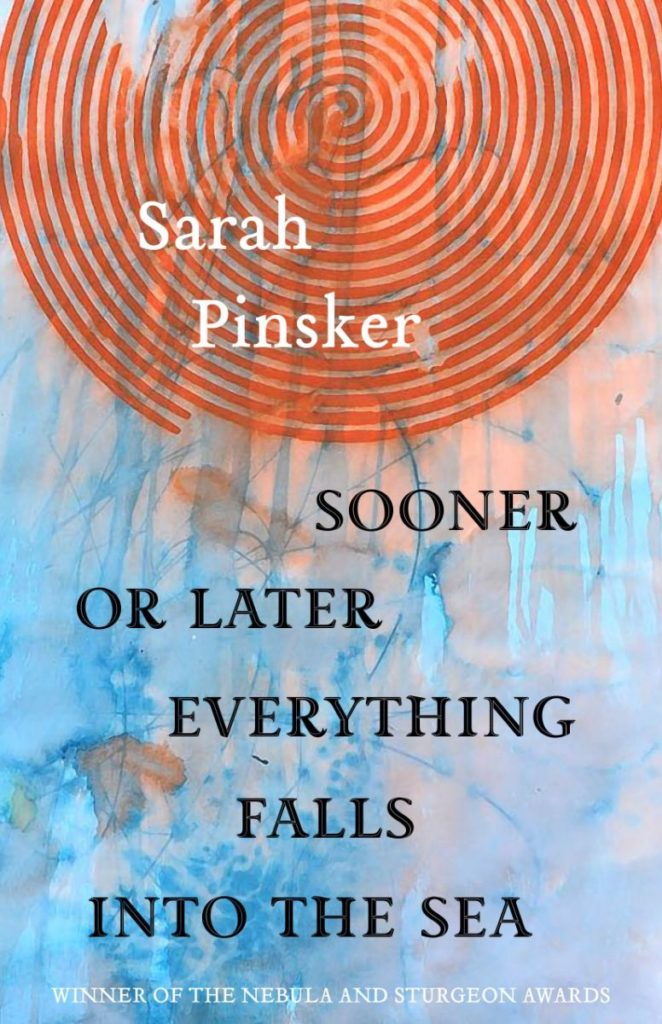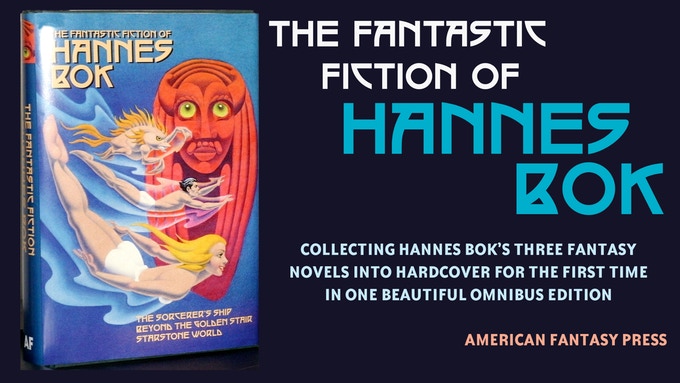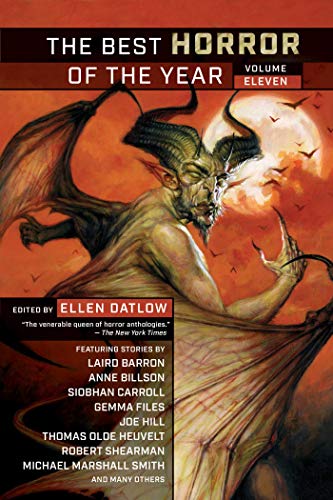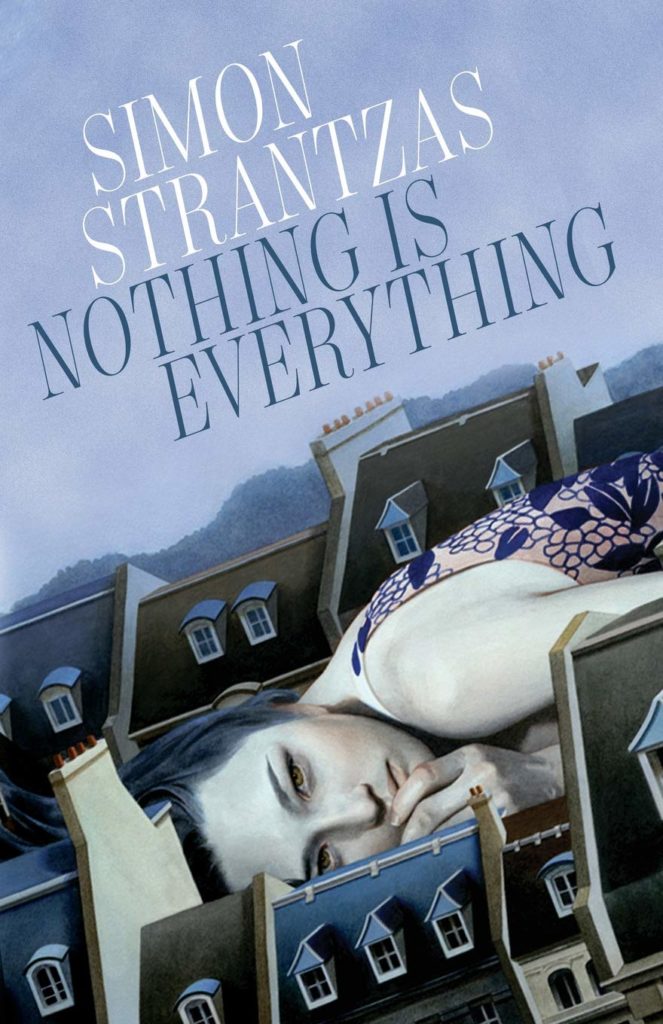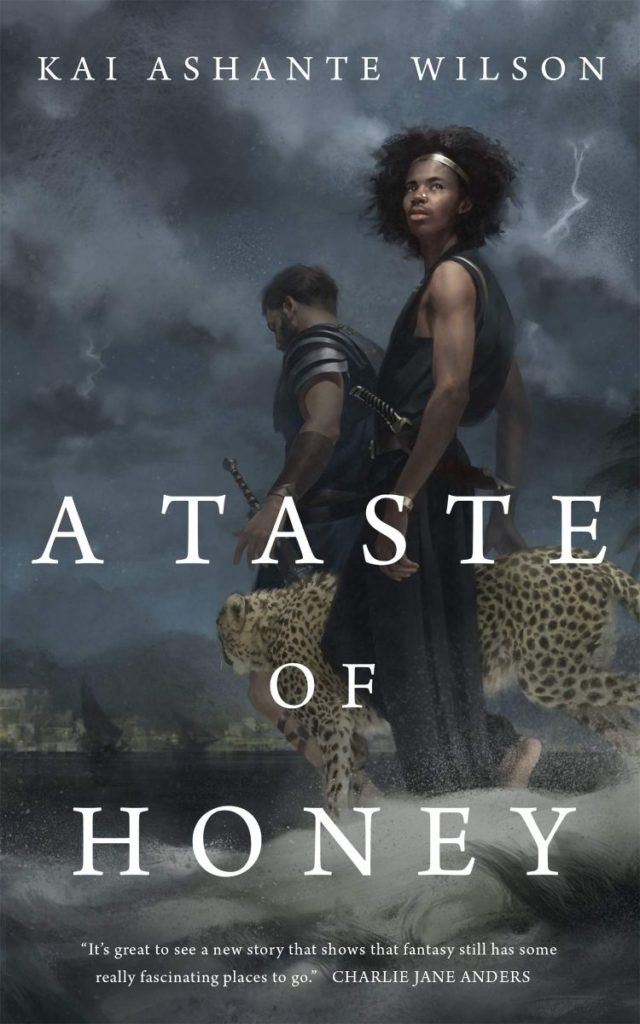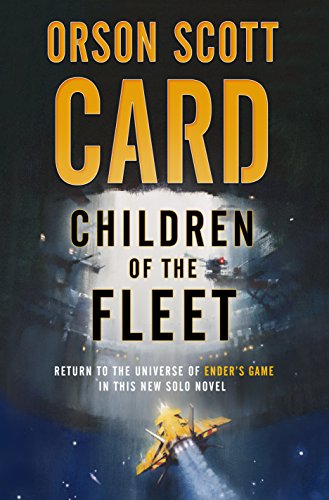(1) HELP LAIRD BARRON. A GoFundMe was started yesterday for “Laird Barron: hospital costs, medication costs”. It has raised $107,285 of the $200,000 goal in 24 hours.
Mike Davis here: Laird is a private person and I’m trying to convey just how serious this is without revealing too much personal information. Make no mistake: This is very serious, and potentially life threatening. That said: He needs a bronchoscopy. He has a mass on his lung. His blood sugar numbers are dangerously high. He will need medications as well. These are just a few of the things that will need to be paid for.
We are raising funds for Laird for three reasons:
- Medical bills (and they will be very high, make no mistake).
- Health Insurance (his friends are looking into getting him health insurance, if possible)
- Lost income (Laird has been on a sickbed since September or so. That’s a long time to be unable to work.)
Laird has been very supportive of so many in the horror community. It’s our turn to give back.
(2) NO COMPOUND INTEREST. In Radio Times, “Russell T Davies debunks Doctor Who £10 million budget rumours”.
…Following reports that the BBC sci-fi will now receive a monumental budget of £10 million per episode, Davies has debunked the rumours.
Asked about the circulating reports, the showrunner explained to Doctor Who Magazine: “That has been exaggerated. If that was the budget, I’d be speaking to you from my base on the Moon.”…
… Executive producer Jane Tranter added: “It’s a really good budget for us. But we are not Game of Thrones. Or The Rings of Power.”
(3) SENDING THE TARDIS OVER THE RAINBOW. When it comes to Doctor Who, “Colourising classic episodes isn’t sacrilege” opines Radio Times’ Steve O’Brien.
…Those black-and-white Doctor Who stories that we have now are already far from the versions that were first put out on VHS in the 1990s. Now, software can restore the original video look to these smudgy old tele-recordings.
With our televisions getting bigger and the resolution becoming sharper, these vintage episodes from the ’60s are beginning to look ever more anachronistic, like listening to a scratchy Noel Coward 78 next to Kendrick Lamar’s latest. It’s difficult to find any black-and-white movie or TV show on Netflix and even BritBox seems wary. While it welcomes plenty of antique TV, it has precious few non-colour series in its vast archive.
Not that colourising old black-and-white Doctor Who is entirely new. Some Jon Pertwee episodes, first broadcast in colour, for years existed only as black and white tele-recordings (the original colour tapes having been junked). Until 2013, the only copy of The Mind Of Evil that survived was in black-and-white, until it was discovered that it was possible to recover the original colour by decoding chroma dot signals within the picture. Only when it was being readied for DVD release was it discovered that episode one didn’t have any chroma dot information, which meant it had to be colourised from scratch….
(4) SAVING THE MOVIES. The New York Times wondered “Why Do Some Films Get Restored and Others Languish? A MoMA Series Holds Clues.”
A frothy musical comedy from Weimar Germany, starring an actress whose unexpected death at 31 may have been a Gestapo murder. The first known Irish feature to be directed by a woman. An American drama from 1939 distributed to largely Black audiences, starring Louise Beavers as the progressive warden of a reform school.
All these films might have disappeared forever, at least in their complete forms. But all are showing beginning Thursday in To Save and Project, the Museum of Modern Art’s annual series highlighting recent preservation work. Some titles, like the opening-night selection, “The Cat and the Canary,” a popular silent from 1927, were preserved by MoMA itself. Others have been flown in from archives around the globe.
Decisions about which films become candidates for preservation — or even what preservation means for any given movie — are rarely clear-cut. They depend on a combination of commercial interests, historical judgments, economic considerations and the availability and condition of film materials….
(5) WHO’LL SAVE FAT JACK’S? “Fat Jack’s, Philadelphia’s first and oldest comic book shop, raising money to fight closure” – the Philadelphia Inquirer has the latest, including news of a GoFundMe appeal.
…Years of losing business to online sellers and the rise of digital comics pushed many comic stores to close down. Fat Jack’s remained operating, as community members raised money to help them out of a 2019 economic downturn. But, right as stability seem to be in sight, the pandemic sent them into a six-month shutdown. Being an in-person store, Fat Jack’s saw sales plummet.
“We’re in a terrible situation and we desperately need your help,” wrote Fat Jack’s manager, Eric Partridge, on the store’s official GoFundMe. According to Partridge, who has been managing the store for 28 years, most Center City clientele had settled into remote work and were no longer making their way into Philly — a reality that, per a 2022 Center City District report, the city continues to struggle with. Only 57% of foot traffic is back, compared to 2019 levels.
“We used to have about 222 to 250 people a week, but now we are down to about 180,” said store owner Mike Ferraro. Fat Jack’s subscription program has also been affected. Working from home meant that readers had to cancel their membership due to being unable to pick up their comics….
(6) FANHISTORY ZOOM AVAILABLE. Fanac.org has added a two-part Zoom panel about Pittsburgh fandom to its YouTube channel.
Pittsburgh in the late 60s/70s saw an explosion of fannish activity, with the founding of the Western Pennsylvania SF Association (WPSFA), the creation of PghLANGE and the publication of many fanzines, including Granfalloon (Linda Bushyager and Suzanne Tompkins). What made Pittsburgh special?…This group of panelists can certainly tell us – they’re the Founding Mothers of WPSFA and PghLANGE. This conversation among friends truly conveys what it was like to be young, female, and the center of fannish creativity in 1970s Pittsburgh. It’s history through facts and anecdotes, from how the organizers of the 1960 Worldcon felt about these new kids, to the Breezewood Curse and where the name PgHLANGE came from. You’ll learn where and why Harlan Ellison whispered “Save me” to Ginjer, the contents of the first PgHLANGE art show, who Mary Esther is, and how Bob Silverberg came to welcome the Founding Mothers to Pittsburgh. It’s great fun, and the convention stories of far too many people sharing far too little sleeping space may remind you of your early convention experiences.
In part 2 of this session, we continue the conversation by the Founding Mothers of WPSFA and PghLANGE (with a few friends!), and continue the focus on fans, professionals and conventions of the 70s…
There are some great stories about Harlan Ellison, and Robert Silverberg. Octavia Butler’s interaction with the group comes up too. Linda talks about why she started writing, and her connection to the NYcon, and Ginjer comments on her transition from social worker to award winning editor. The impact of Star Trek on WPSFA is dissected as well. Fans, both living and dead, are remembered, with stories and anecdotes, including the full story of the Pittsburgh subway system. My favorite is the story of “the Sensuous SF writer”….There are touching stories, funny stories, and at least one story that achieved mythic status in fandom. If you were a Pittsburgh fan in the 70s, you may find yourself mentioned!
Note: Participants had a few technical difficulties and there are some rough spots in the recording.
(7) MEMORY LANE.
1996 — [Compiled by Cat Eldridge.] George R.R. Martin’s A Game of Thrones
I gather that it’s hard to properly describe food to someone who won’t be able to actually taste it. This apparently isn’t a problem for George R.R. Martin who inserts detailed descriptions of food everywhere in A Song of Ice and Fire.
I have not seen the HBO series so I’ve no idea how this was scripted into an actual scene if indeed it was. I like the novels and my long standing policy as you know by now is not to watch an adaption of any such work that I’ve enjoyed immensely. Full cast audio adaptations are different as, for many reasons, they work for me whereas video adaptations don’t.
Below is one of my favorite such passages.
All the while the courses came and went. A thick soup of barley and venison. Salads of sweetgrass and spinach and plums, sprinkled with crushed nuts. Snails in honey and garlic. Sansa had never eaten snails before; Joffrey showed her how to get the snail out of the shell, and fed her the first sweet morsel himself. Then came trout fresh from the river, baked in clay; her prince helped her crack open the hard casing to expose the flaky white flesh within. And when the meat course was brought out, he served her himself, slicing a queen’s portion from the joint, smiling as he laid it on her plate. She could see from the way he moved that his right arm was still troubling him, yet he uttered not a word of complaint.
Later came sweetbreads and pigeon pie and baked apples fragrant with cinnamon and lemon cakes frosted in sugar, but by then Sansa was so stuffed that she could not manage more than two little lemon cakes, as much as she loved them. She was wondering whether she might attempt a third when the king began to shout.
King Robert had grown louder with each course. From time to time Sansa could hear him laughing or roaring a command over the music and the clangor of plates and cutlery, but they were too far away for her to make out his words.
(8) TODAY’S BIRTHDAYS.
[Compiled by Cat Eldridge.]
- Born January 12, 1930 — Bruce Lansbury. Brother of Angela Lansbury. He is best remembered as producer of eighty-eight episodes of Murder, She Wrote starring his sister. He also was a writer for fifteen episodes of the show. He produced the bulk of the episodes of The Wild Wild West, and many episodes of Mission: Impossible. (That was how I found him as I’m watching the entire series.) He was producer of Buck Rogers in the 25th Century, Knight Rider and Wonder Woman, and executive produced The Fantastic Journey. (Died 2017.)
- Born January 12, 1951 — Kirstie Alley. She’s here for being Saavik on Star Trek II: The Wrath of Khan, her very first film. It was, errr, interesting reading the various rumors why this was her only Trek film. Her SFF experience otherwise was brief limited to being the villain’s ex-girlfriend in Runaway, an uncredited handmaiden on Quark, and being in the Village of the Damned as Dr. Susan Verner. (Died 2022.)
- Born January 12, 1952 — Walter Mosley, 71. I have read his Ezekiel “Easy” Rawlins series but hadn’t been aware that he wrote SF of which he has four novels to date, Blue Light, Futureland: Nine Stories of an Imminent Future, The Wave, and 47. There’s a Jack Kirby art book called Maximum Fantastic Four was conceived of and orchestrated by him. Interestingly enough, he’s got a writing credit for episode of Masters of Science Fiction called “Little Brother” where Stephen Hawking is the Host according to IMdB.
- Born January 12, 1955 — Rockne O’Bannon, 68. Creator of five genre series in Alien Nation, Cult, Defiance, Farscape and seaQuest. He also helped write the Warehouse 13 pilot. He has also written and produced for Constantine, Revolution and V, among many other projects. I truly loved Farscape and seaQuest but thought Defiance went bad fast.
- Born January 12, 1957 — John Lasseter, 66. Animator fired from Disney for promoting computer animation who joined Lucasfilm which eventually became Pixar under Steve Jobs. And where he directed Toy Story, A Bug’s Life, Toy Story, Cars and Cars 2. He also Executive Produced Toy Story 3 as well as Zootopia, Finding Dory and Incredibles 2.
- Born January 12, 1960 — Oliver Platt, 63. My favorite role by him is Porthos in The Three Musketeers but his first genre role was as Randy Steckle in Flatlineers and he later played Rupert Burns in the Bicentennial Man film on Asimov’s The Positronic Man. He voices Hades in Wonder Woman, not surprising given his deep voice.
- Born January 12, 1970 — Kaja Foglio, 53. Writer, artist, and publisher. Foglio co-won the first Hugo Award for Best Graphic Story at Anticipation (2009) for the absolutely stunning Girl Genius, Volume 8: Agatha Heterodyne and the Chapel of Bones, created with her husband artist Phil Foglio and colorist Cheyenne Wright, and co-won two more Hugos in the following years. Having won three three years running, they removed themselves from further competition. If you haven’t read them, you’re in for treat as they’re quite amazing. Her husband Phil Foglio and colorist Cheyenne Wright do stunning work.
- Born January 12, 1980 — Kameron Hurley, 43. Winner of a Best Related Work Hugo at London 3 for We Have Always Fought: Challenging the Women, Cattle and Slaves Narrative. Fiction wise, her most excellent God’s War won a BFA and a Kitschie, whereas her The Geek Feminist Revolution won her a BFA for non-fiction. Very impressive indeed. Oh, and she won a Hugo for Best Fan Writer at Loncon 3 as well. Nice.
(9) JOB THREAT? The Hollywood Reporter takes the media writing community’s temperature about new AI writing platforms: “ChatGPT: Will Hollywood Writers Consider Rules for AI?”
…“Do I see this in the near term replacing the kind of writing that we’re doing in writers rooms every day? No, I don’t,” says Big Fish and Aladdin writer John August, who has tested the free research preview and talked about it on the popular Scriptnotes podcast, which he co-hosts with Craig Mazin (The Last of Us). Still, he adds, “There certainly is no putting the genie back in the bottle. It’s going to be here, and we need to be thinking about how to use it in ways that advance art and don’t limit us.”
Another prominent writer and showrunner, speaking to The Hollywood Reporter anonymously, has taken ChatGPT for several test rides and says the chatbot seems incapable of writing funny jokes or producing results that might be useful to include in a script without “substantial creative input from me.” This showrunner adds, “When people conclude that this is going to replace professional writers, I think they’re sort of swallowing an Elon Musk-style fantasy about the future that is not actually connected to the technology.”…
(10) DIG THOSE DIGITS. Speaking of Elon Musk, what’s he doing using my number? “Tesla set to spend $770 million expanding Texas Gigafactory” reports The Verge.
Electric vehicle manufacturer Tesla has notified the state of Texas of its plans to spend upward of $770 million expanding its already immense Austin-based factory….
(11) HOME SWEET HOME. Steve Vertlieb posted an intimate view of his “living” room (Steve’s quotemarks) on Facebook. Looks very fannish, although the stacks may be too straight. (Click for larger images.)



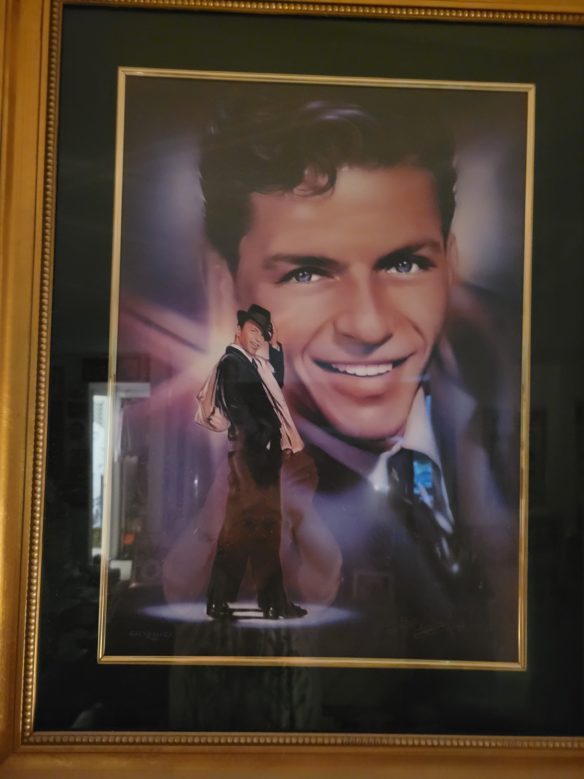
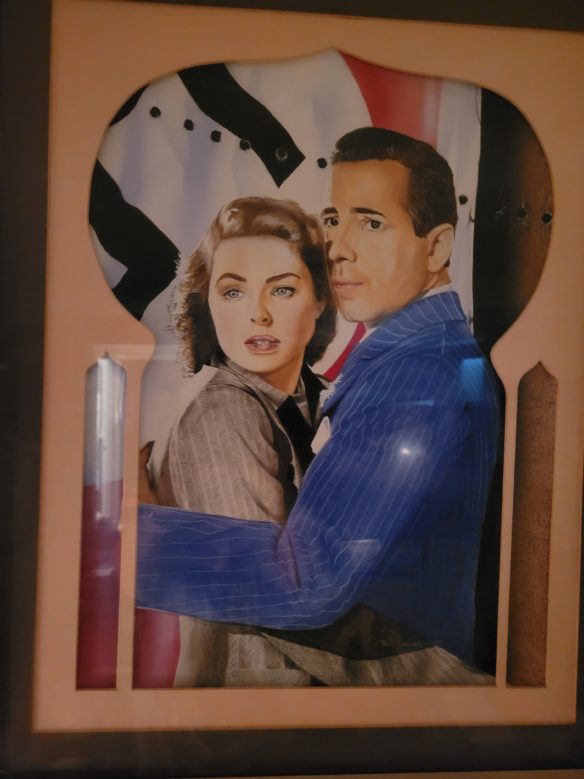
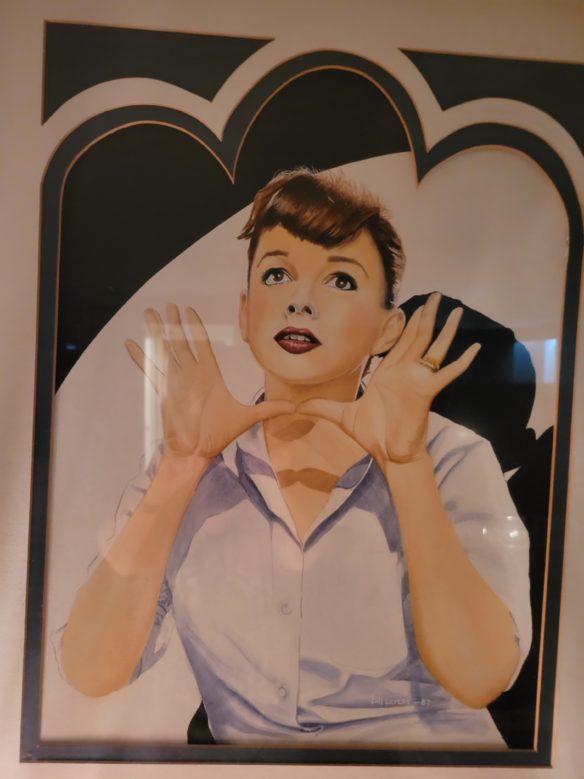
(12) GOING UP. [Item by SF Concatenation’s Jonathan Cowie.] Nature reports “2022 was a record year for space launches”, as 180 rockets lifted off successfully, with SpaceX driving the pace.
2022 was a record year for space with 180 successful rocket launches to orbit — the most ever, and 44 more than in 2021. The launches were dominated by rockets from US company SpaceX and from the Chinese government and businesses…

(13) JUSTWATCH. Here are JustWatch’s Top 10 lists for December.
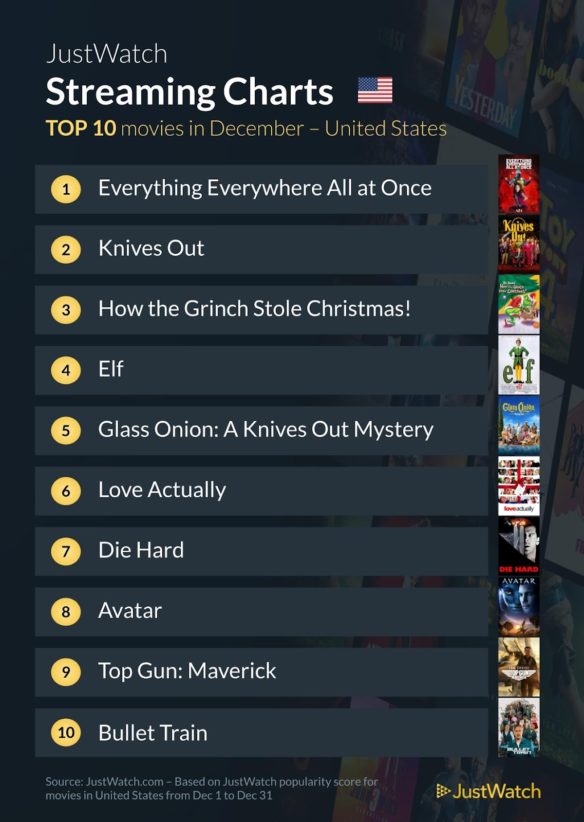
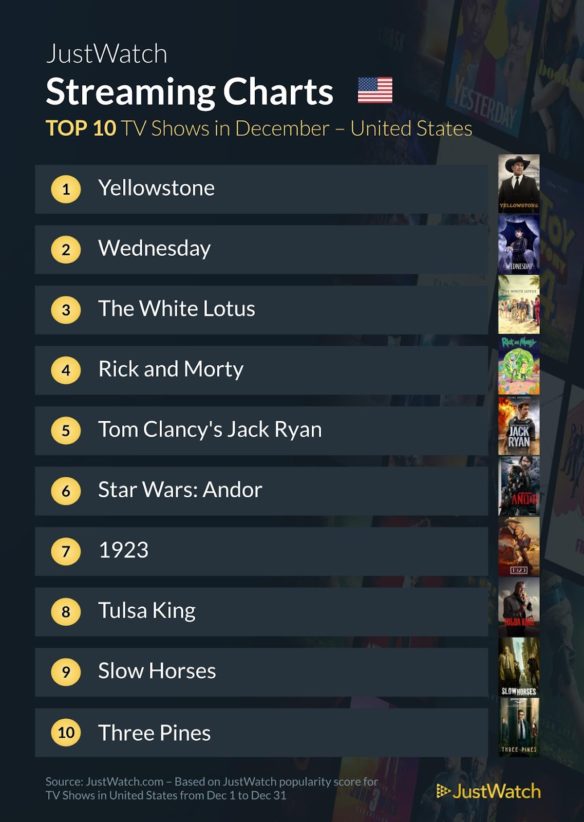
[Thanks to Chris Barkley, Andrew Porter, Michael Toman, Diana Glyer, Steve Vertlieb, SF Concatenation’s Jonathan Cowie, BravoLimaPoppa, Cat Eldridge, Mike Kennedy, and John King Tarpinian for some of these stories. Title credit belongs to File 770 contributing editor of the day Daniel Dern.]
